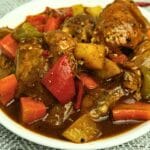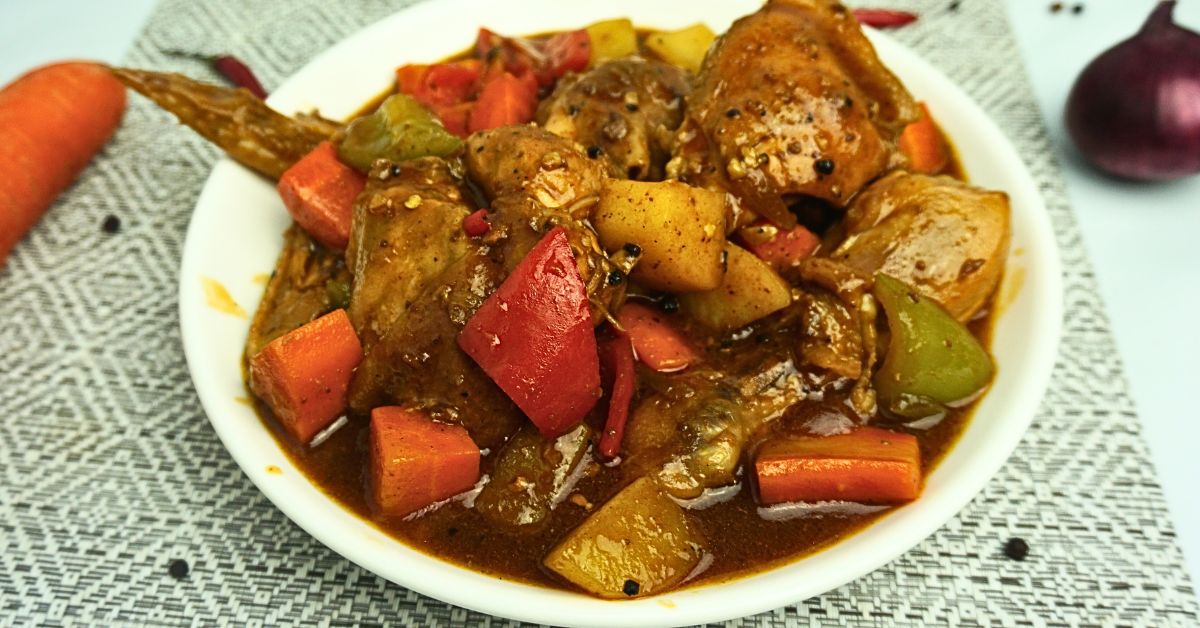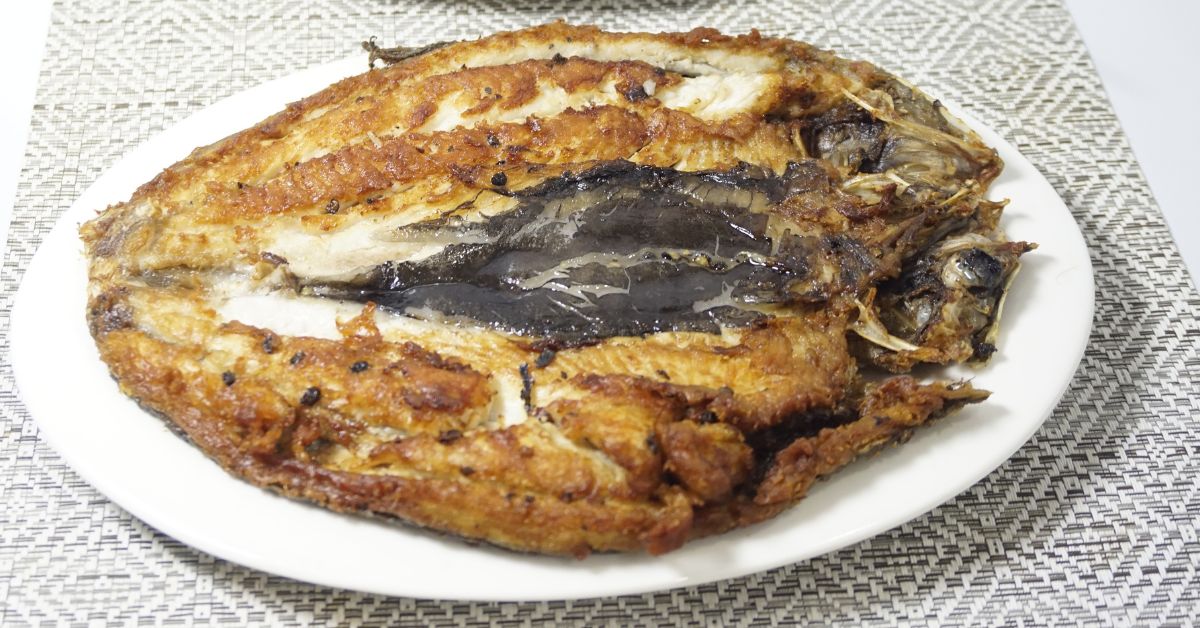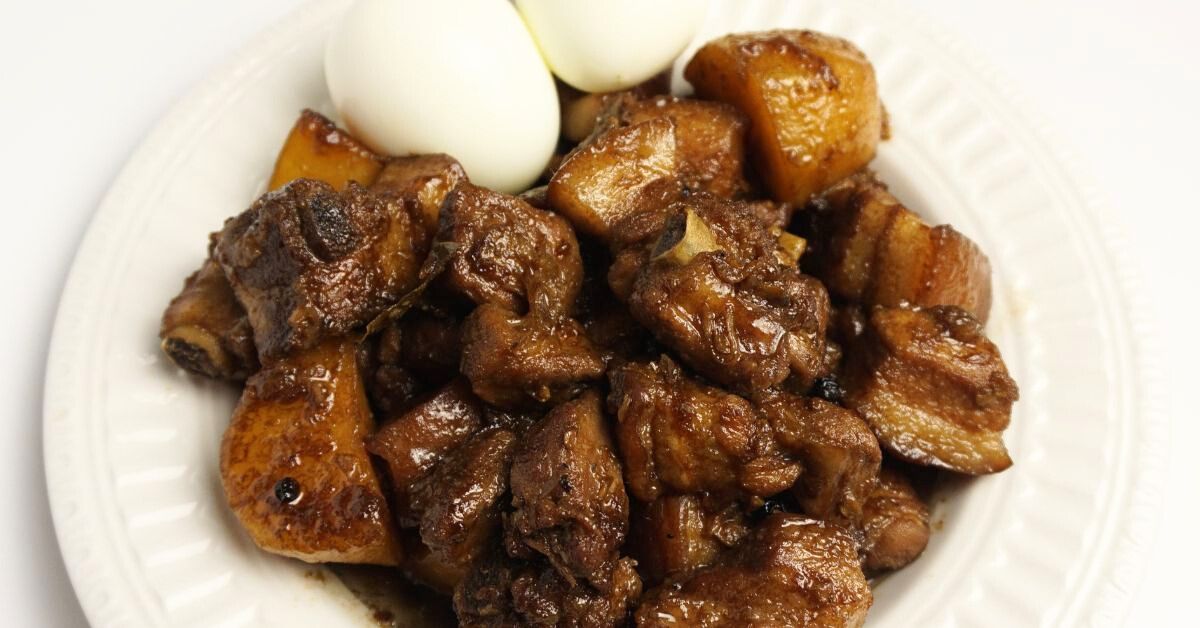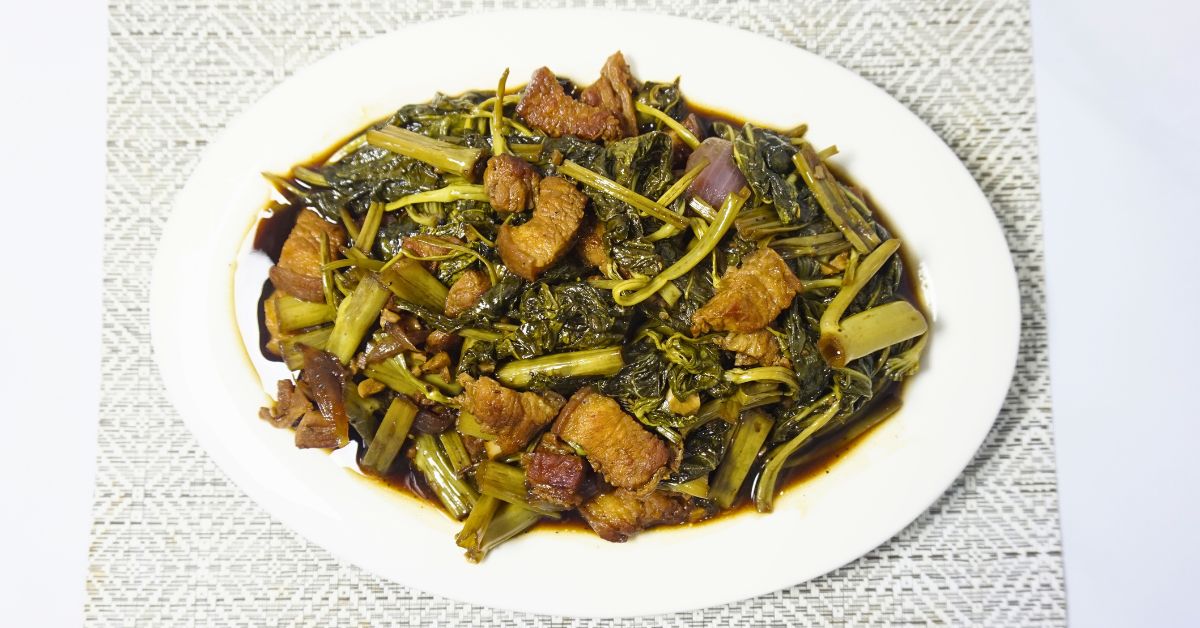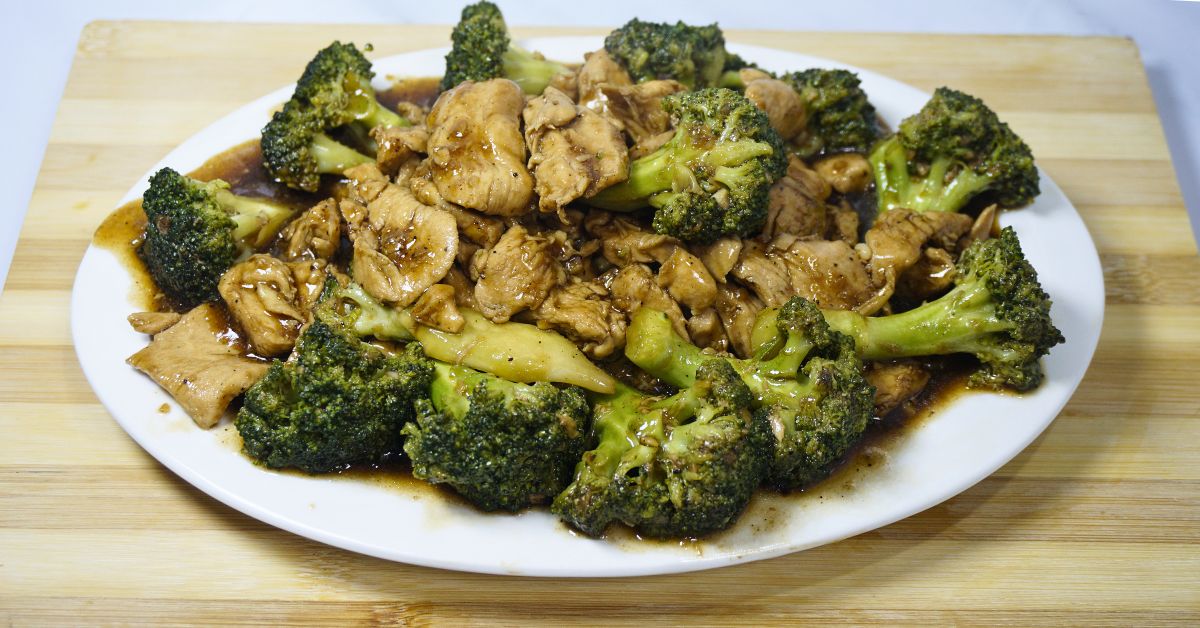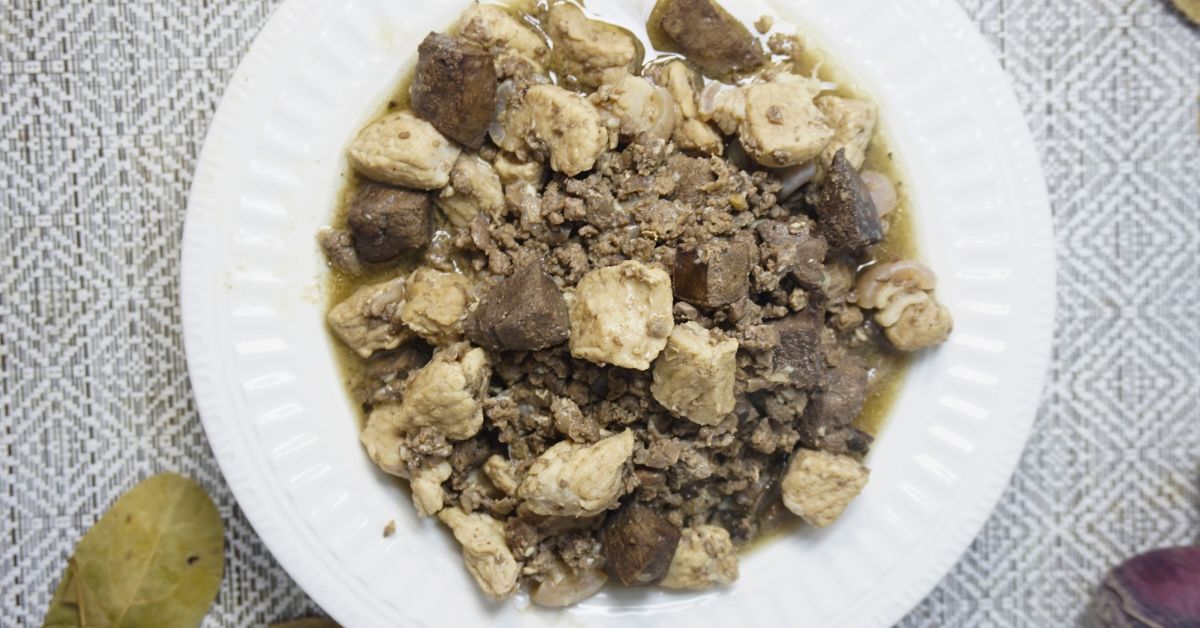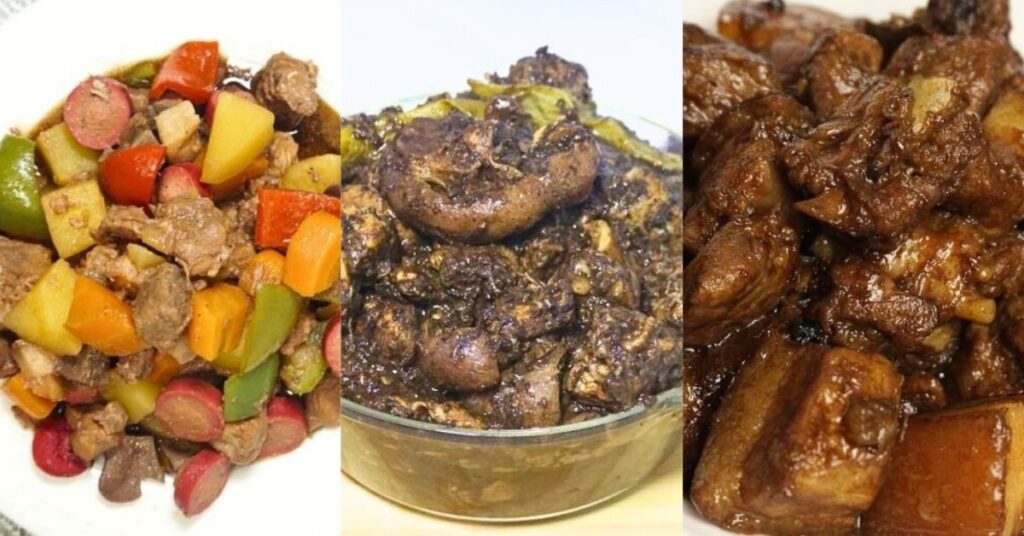
I grew up in a home where the smell of garlic hitting hot oil meant something good was coming. It didn’t matter if it was payday or if we were down to canned sardines and two eggs. My mom would make it work. And now that I’m the one cooking for my own family, I realize something. Filipino food is not just about what’s in the pan. It’s about comfort. It’s about home.
So now, it made me think, what does Filipino food really mean?
I know everyone will agree, Filipino or not, pinoy foods are different.
I worked in South Korea for three years, but no matter how good the samgyupsal or kimchi was, there were nights I’d trade it all for a simple bowl of sinigang. I missed the sharp asim, the hot rice, the warm soup that felt like someone cared. On weekends, I’d hunt for Filipino stores. And when I found bagoong or a pack of Lucky Me pancit canton, it felt like I brought it home with me. That’s how strong Filipino food is. It connects you to your past, to your people, to your roots.
Filipino food is more than just recipes. It’s a feeling. So I thought of writing this blog and share what I know about Filipino cuisines.
Whether you’re a Filipino living abroad, someone dating a Pinoy, or just curious about why adobo is such a big deal, this is for you.
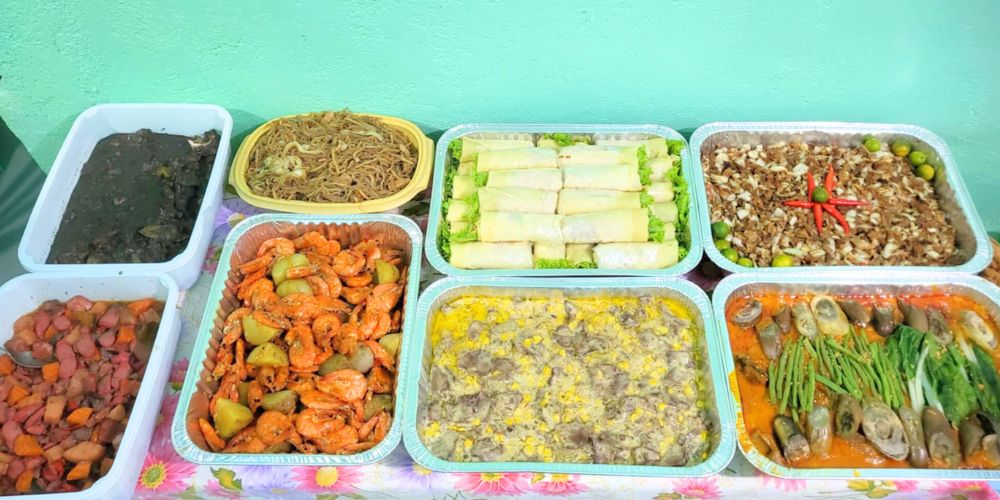
Origin of Filipino Recipes
You know how every dish has a story? Filipino food is full of stories. Some are really old, from way before your lolo and lola were born. And these stories came from people who visited our islands, traded with us, lived here, or ruled over us. Every time someone new came, they brought food. And we Filipinos? We’re really good at taking new things and making them our own.
It All Started with the First Filipinos
Long ago, before there were restaurants or grocery stores, the first people who lived in the Philippines cooked with whatever they could find around them. They used rice, coconut, fish, bananas, and root crops like gabi and ube. They steamed food, grilled it over fire, and boiled soups with leaves and herbs. It was simple and natural.
These early people were called Austronesians. They came from nearby islands using boats. They were smart and creative. That is how Filipino cooking began, by using what nature gave and making every ingredient count.
Then Came the Traders
Before any country tried to rule over us, people were already visiting the Philippines to trade. Chinese traders came and shared noodles, soy sauce, and spring rolls. That is where pancit and lumpia started. But Filipinos gave it a local twist. We used calamansi instead of lemon, added our own veggies, and made sure it tasted the way we liked it.
We also got flavors from Malaysia, India, and Indonesia. That is why some dishes, especially in Mindanao, taste like curry or have lots of coconut milk.
Next Was Spain
Then the Spanish came. And they stayed for more than three hundred years. They brought a lot of food ideas like tomato stews, roast pork, and dishes made for big celebrations. They showed us how to make paella, but we used local rice and seafood. They had their own adobo, but we added soy sauce and garlic and turned it into something very Filipino.
Even today, when we cook for Christmas or town fiestas, you can feel that Spanish influence in our lechon, embutido, and leche flan.
Then the Americans Came
After the Spanish, the Americans took over. They introduced canned food, burgers, fried chicken, and spaghetti. That is why a lot of Filipino families still eat Spam, corned beef, and instant noodles. But again, we made it our own. Our spaghetti is sweeter. Our fried chicken comes with rice. And we still eat everything with sawsawan.
Even fast food in the Philippines tastes different from anywhere else because we like it the Filipino way.
Different Islands, Different Flavors
The Philippines has more than seven thousand islands, so of course the food is not all the same. Each region has its own favorites.
In Ilocos, people like vegetables and dried fish. In Bicol, they love spicy food with lots of coconut milk. In the Visayas, you will taste a lot of vinegar and sour soups. In Mindanao, there are more curry-style dishes and spices.
Even something as simple as adobo is made differently in every place. Some add coconut milk, some add patis, and some keep it dry. Every version is special in its own way.
My references:
University of Hawaiʻi – The Globalization of Filipino Cuisine
What Makes Filipino Food Special
Every country has its own kind of comfort food, right? But for me, Filipino food just hits different(no bias!). It’s the kind of meal that makes you close your eyes after that first bite and say, “This is it.”
Our food is a mix of flavors that somehow work together. A little salty, a little sour, sometimes sweet, maybe even spicy. Sounds messy, but when it’s done right, it’s magic. It tastes like home.
And here’s the best part. Filipino food isn’t meant to impress. It’s meant to feed. You don’t need fancy ingredients. You don’t even need a big budget. Just some garlic, soy sauce, rice, and a bit of creativity and you’ve got a meal that brings people together.
That’s what makes it special. It’s honest. It’s warm. And it always makes you feel like you belong.
Must-Have Filipino Ingredients
If you want to cook real Filipino food, there are a few ingredients that should always be in your kitchen. These are the basics, the things we grew up seeing in our moms’ shelves and cooking with almost every day.
Soy sauce and vinegar are probably the most used pair in Filipino cooking. These two are the heart of dishes like adobo and paksiw. We don’t even measure sometimes, we just know by taste.
Fish sauce or patis adds that deep salty flavor. Just a few drops can level up a simple broth or sauté. It smells strong, but trust me, it makes everything taste better.
Garlic and onions start almost every Filipino dish. We sauté them in hot oil until the smell fills the house. That’s when you know something good is cooking.
Bay leaves are added to stews like adobo or menudo. You may not eat them, but they give a warm, earthy flavor in the background.
Coconut milk is a game-changer. We use it for savory dishes like Bicol Express and ginataang gulay, and even for desserts. It makes everything creamy and rich.
Shrimp paste or bagoong is strong and salty, but full of umami. We use it in dishes like kare-kare or just eat it with green mangoes and rice.
Calamansi is our version of lime. It’s tiny but packs a sour punch. We use it for dipping sauces, marinades, or even drinks.
And of course! Rice. It’s not a Filipino meal without rice. You can have the best ulam, but without rice, something feels missing.
These are simple ingredients, but they carry big flavors. With just these, you can already cook so many well-loved Filipino dishes.
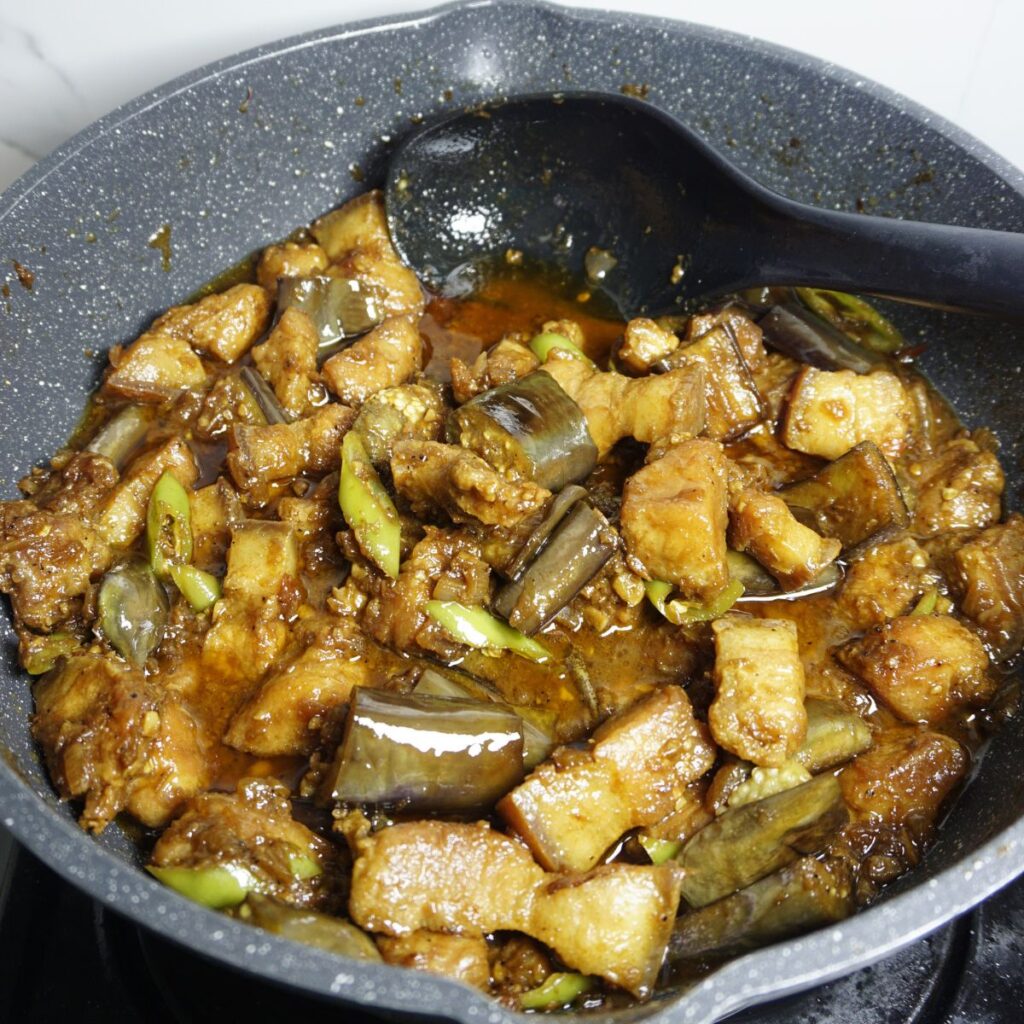
Filipino Cooking Methods You'll Actually Use
When I first started learning how to cook, I was surprised by how many Filipino dishes begin with the same simple steps. It’s comforting to know that with just a few basic techniques, you can create a variety of flavorful meals that remind you of home.
Sautéing (Gisa or Ginisa): This is often the first step in many Filipino recipes. You start by cooking garlic and onions in hot oil until they’re fragrant. It’s a simple way to build flavor and is used in dishes like adobo and ginisang gulay.
Boiling (Nilaga): Boiling is used to make hearty soups and stews. Dishes like nilagang baka and bulalo involve simmering meat and vegetables until tender. The key is to let the flavors meld together over time.
Grilling (Ihaw): Grilling over charcoal gives food a smoky flavor that’s hard to beat. Whether it’s pork barbecue or inihaw na isda, grilling is a favorite method for gatherings and celebrations.
Steaming (Halabos): This method is often used for seafood. For example, halabos na hipon involves cooking shrimp in its own juices, sometimes with a bit of soda or lemon, to enhance the flavor.
Marinating in Vinegar (Kinilaw): Similar to ceviche, kinilaw is a method where fresh fish is “cooked” by marinating it in vinegar and spices. It’s a refreshing dish that’s perfect for hot days.
Toasting (Busa): This involves dry-roasting ingredients like peanuts or dried fish in a pan to bring out their natural flavors. It’s a simple technique that adds depth to many dishes.
Smoking (Tinapa): Smoking is used to preserve fish, giving it a distinct flavor. Tinapa is often enjoyed with rice and a side of tomatoes, bringing back memories of traditional breakfasts.
Baking (Hurno): While not as common, baking is used for dishes like bibingka and leche flan. It’s a method that combines traditional flavors with a touch of modern cooking.
Parboiling (Sangkutsa): This technique involves partially cooking meat before finishing it in another method. It’s used in recipes like kare-kare to ensure the meat is tender and flavorful.
Blanching (Banli): Blanching is quickly boiling vegetables and then plunging them into cold water. It helps retain their color and texture, often used before stir-frying or adding to soups.
These ways of cooking aren’t just about getting food on the table. They’re part of who we are. Every method from sautéing to simmering has a story behind it. It’s how our lolas made the most out of simple ingredients. It’s how we learned to cook with heart, not just with a recipe. Whether you’ve been cooking for years or just figuring things out, learning these gives you a real feel for what Filipino food is all about.
8 Simple Filipino Recipes You Should Learn First
When I moved out and started cooking on my own, I had zero clue what I was doing. I just knew I wanted food that reminded me of home. Nothing fancy. Just something that tasted like what Nanay or Lola would make comforting, simple, and full of love.
These are the dishes I started with. If you’re just getting into Filipino cooking, these are the best ones to try first. You don’t need a lot of ingredients. You don’t need to be a pro. You just need a bit of love for food and a lot of rice.
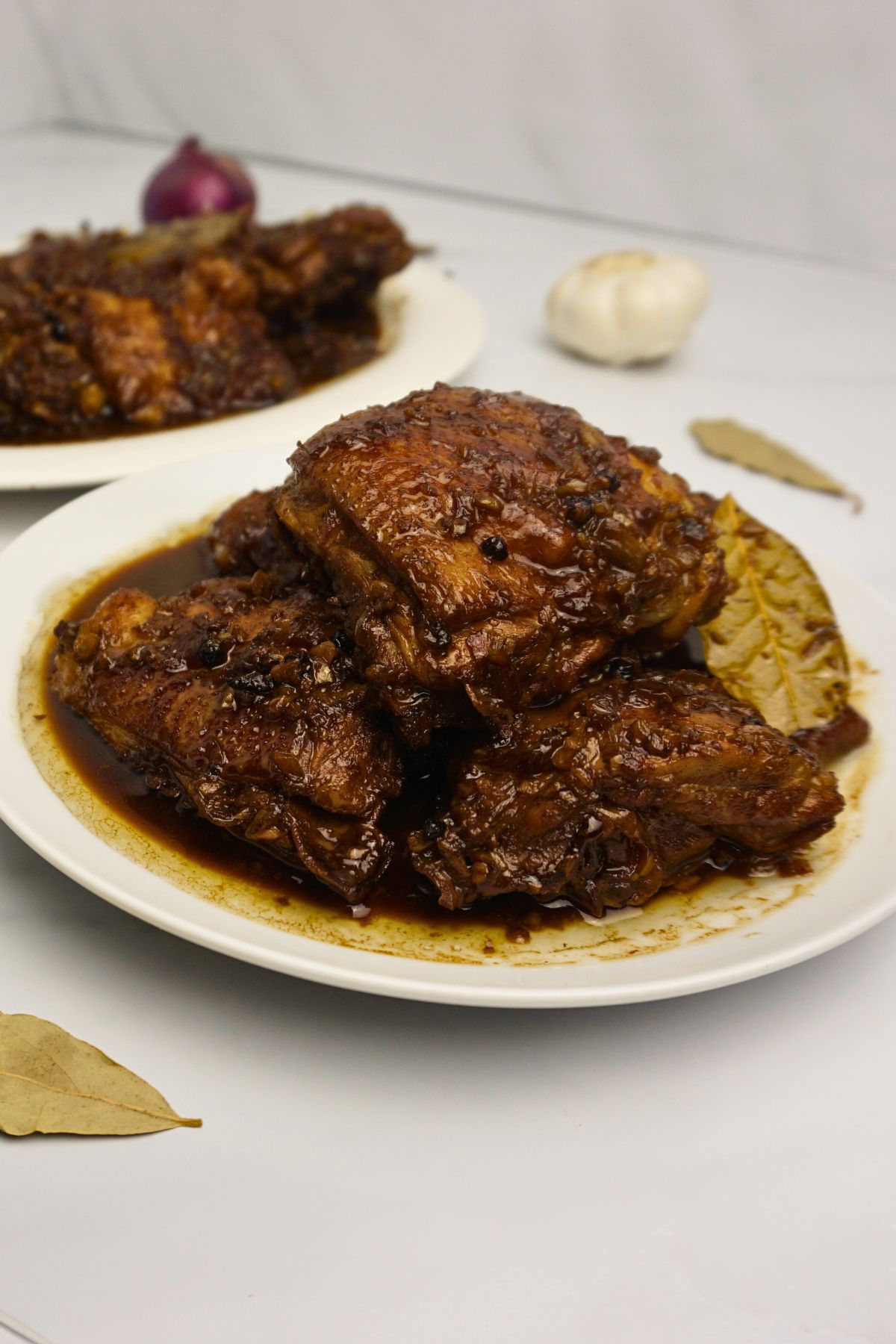
1. Chicken Adobo
This was the first real meal I cooked that actually tasted like something my mom would make. Just chicken, soy sauce, vinegar, garlic, and bay leaves. Boil it, simmer it, let the smell fill your kitchen. It’s forgiving, even if you mess up the measurements a bit.

2. Tinolang Manok
This one brings back memories of being sick as a kid. My mom would serve this hot with malunggay and rice. It’s a simple soup, ginger, onions, sayote or green papaya, and chicken. But there’s comfort in every spoonful.
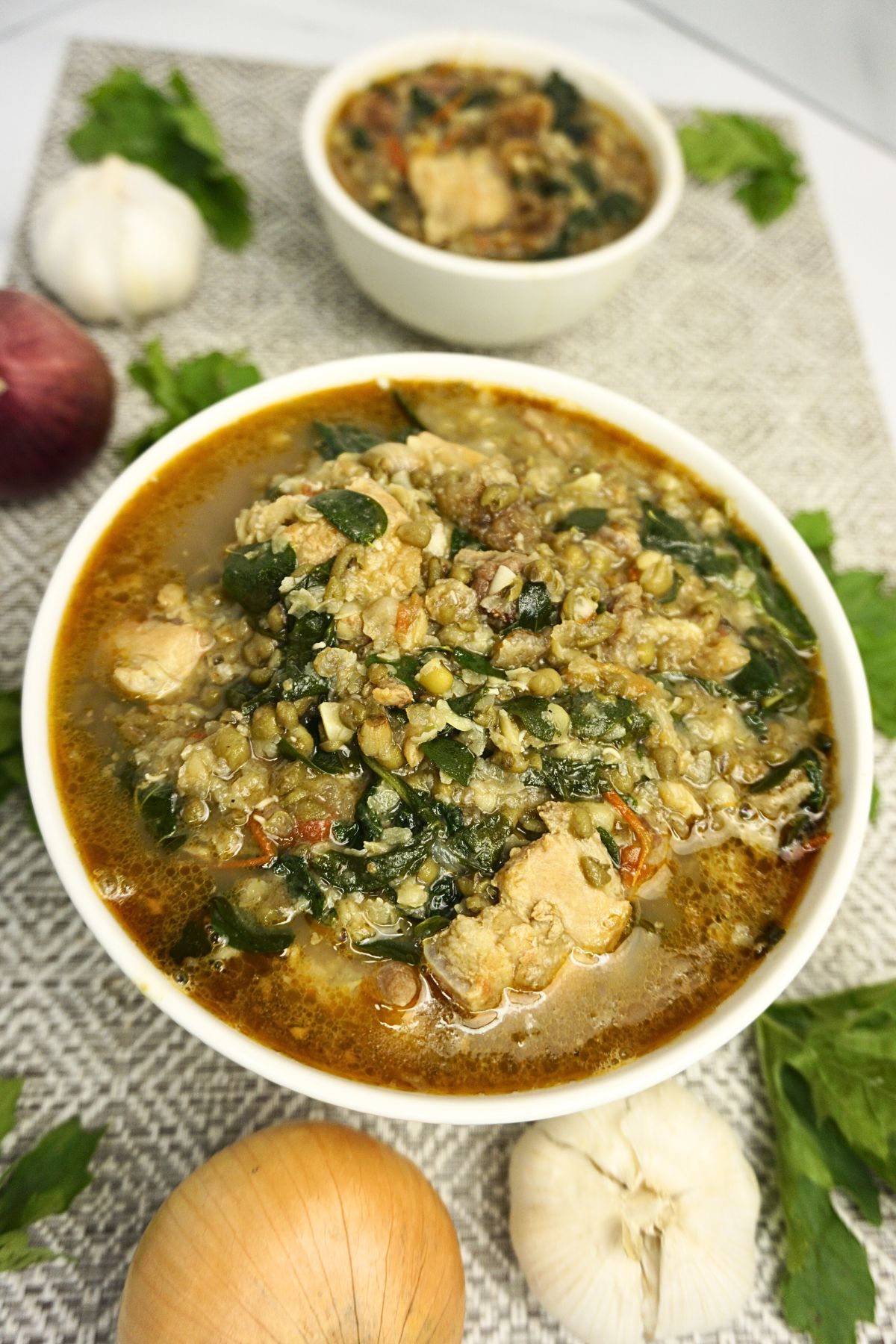
3. Ginisang Munggo
I used to avoid munggo when I was young, but now I crave it. Boil the mung beans until soft, then sauté garlic, onions, tomatoes, and add any leftover meat. You can keep it vegetarian too. It’s cheap, healthy, and filling.
4. Sinangag (Garlic Fried Rice)
The best way to use leftover rice. Just garlic, oil, and rice. I cook this almost every morning with egg and some tuyo or hotdog on the side. It’s simple but full of flavor.
5. Adobong Sitaw
This one’s underrated. String beans sautéed in garlic, soy sauce, and vinegar. You can add pork if you have it, but it’s still good on its own. It’s one of those dishes that stretch well good for the budget.
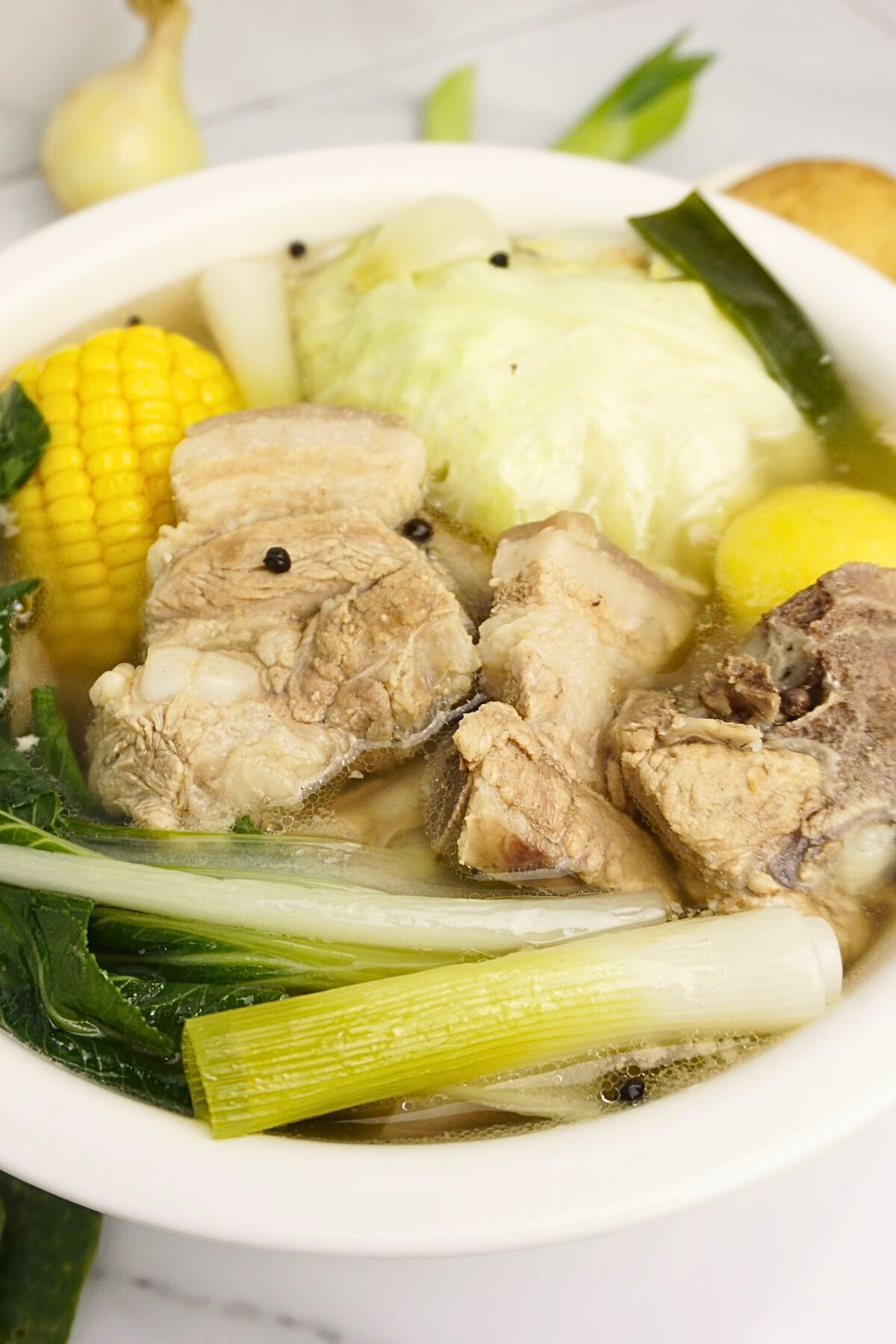
6. Nilagang Baboy
This one is great for beginners. Just boil pork with potatoes, cabbage, and corn. Add salt and pepper to taste. That’s it. It’s simple and hearty, especially when you dip the pork in patis with calamansi.
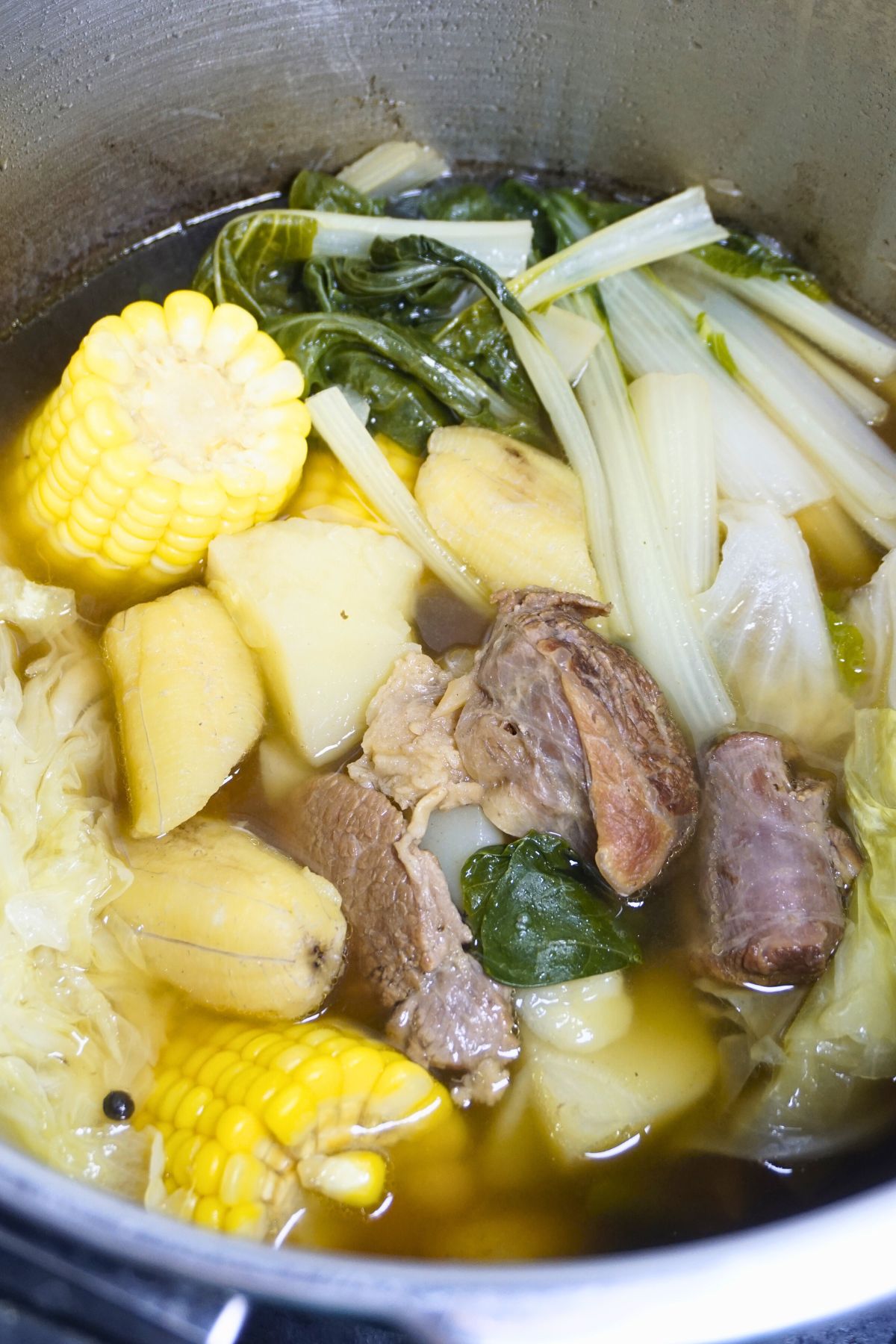
7. Nilagang Baka
Same idea as nilagang baboy, but beef gives a deeper flavor. My kids love it when I serve it with extra corn. It’s the kind of soup that makes you want to nap after eating in a good way.
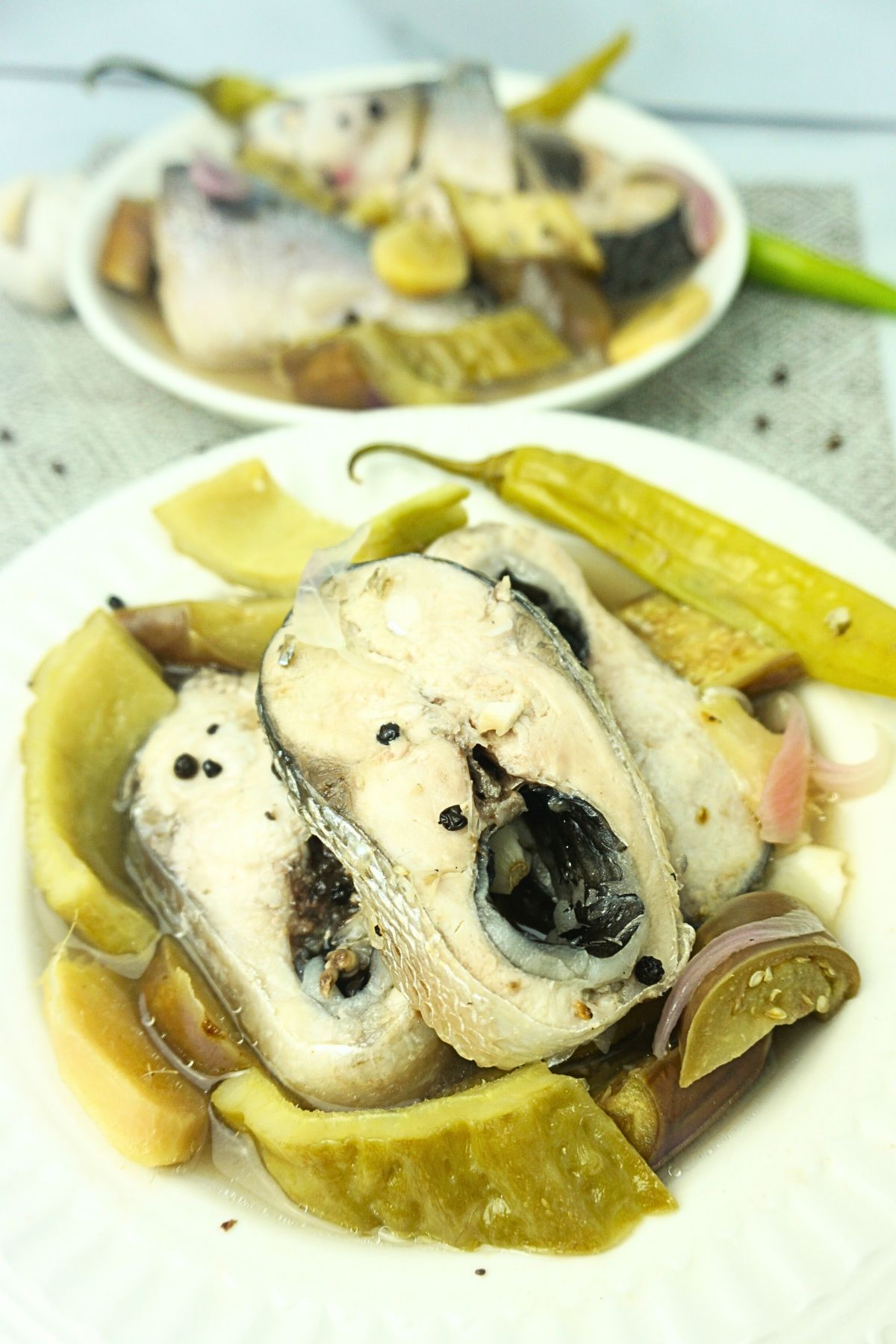
8. Paksiw na Bangus
Milkfish simmered in vinegar, garlic, onions, and sometimes with ampalaya or eggplant. No frying, no sautéing. Just put everything in a pot and let it cook. It’s sour, savory, and goes so well with hot rice.
Filipino Food Culture in Daily Life
In the Philippines, food is more than just something we eat. It’s how we connect. It’s part of how we show love, welcome people, and make memories. Even before someone says “Hello,” you’ll probably hear “Kumain ka na?” (Have you eaten?) first. That’s just how we are — food is always at the center of everything.
I still remember how we used to eat lunch with our hands. No spoon and fork. Just clean hands and rice mixed with ulam (main dish), dipped in sawsawan (dipping sauce). That’s kamayan (eating with hands) and it’s not just a style of eating, it’s an experience. It makes food feel more real. You’re connected to what you eat. And let’s be honest, rice with your hands just hits different.
And speaking of rice there is always rice. It doesn’t matter if the ulam is as simple as itlog (egg) or even just mantika with asin (cooking oil with salt), as long as there’s rice, it’s a meal. Then comes the sawsawan toyomansi (soy sauce with calamansi), suka with sili (vinegar with chili), patis with calamansi (fish sauce with calamansi) every Filipino has their favorite combo. Sometimes, the sawsawan even steals the spotlight from the ulam itself.
But the best part of every meal? It’s kwentuhan (storytelling or chatting). The stories, the teasing, the jokes that go around the table. You sit down hungry, but you leave full not just because of the food, but because of the laughter and the company. Whether it’s a big handaan (feast or celebration) or a simple dinner after work, food brings people together.
Even now, as I cook for my own family, I feel that same joy. Watching them dig in, seeing them pour extra soy sauce, hearing them laugh with their mouths full that’s what it’s all about.
Food, for us Filipinos, is life. It’s love. And it’s home.
Related posts:
No related posts.



